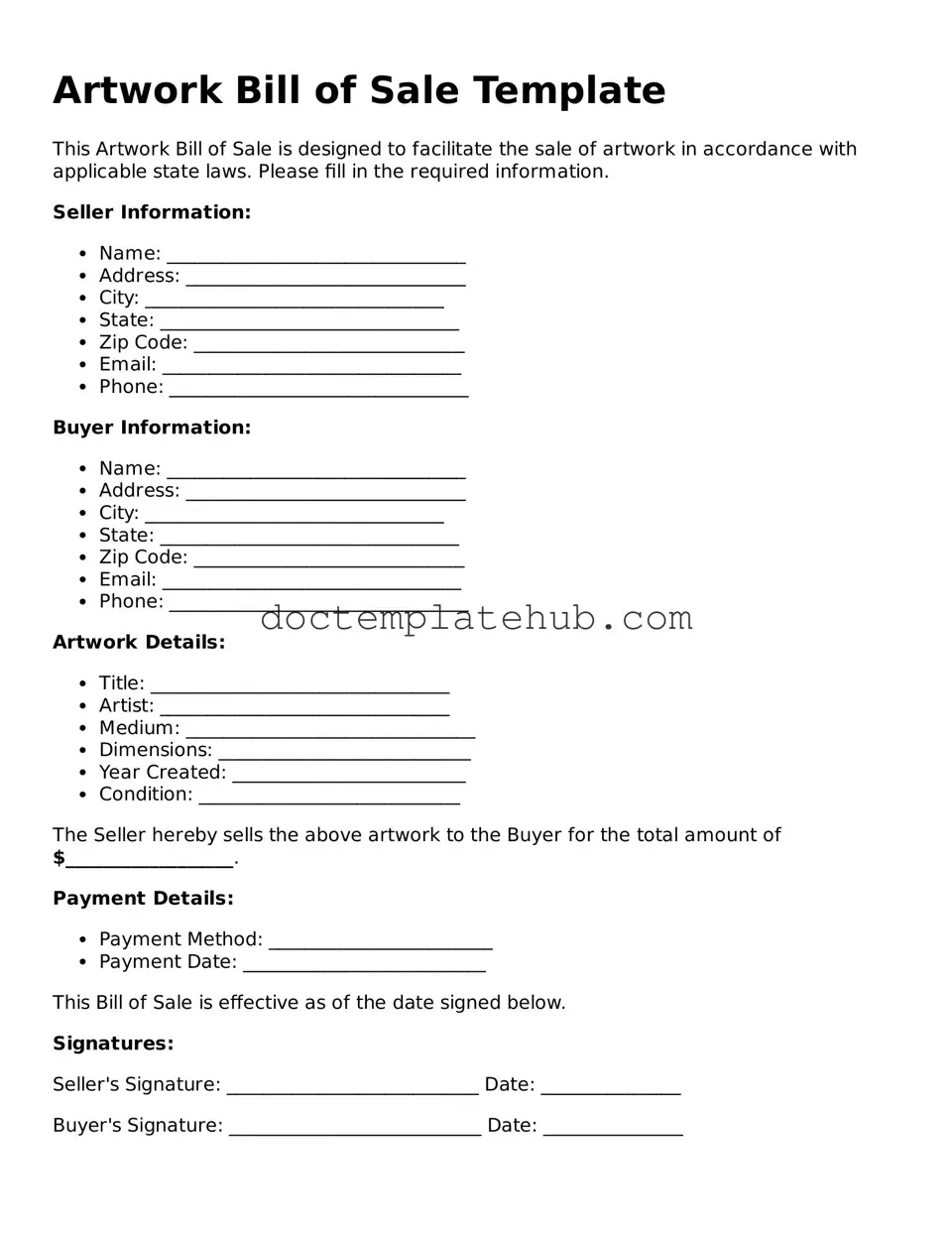What is an Artwork Bill of Sale?
An Artwork Bill of Sale is a legal document that transfers ownership of a piece of artwork from one party to another. This document serves as proof of the sale and includes important details about the artwork, such as the title, artist, medium, and sale price. It protects both the buyer and seller by clearly outlining the terms of the transaction.
Why do I need an Artwork Bill of Sale?
An Artwork Bill of Sale is essential for several reasons. It provides a clear record of the transaction, which can be useful for tax purposes and future resale. It also helps to establish provenance, which is the history of ownership of the artwork. This documentation can enhance the artwork's value and authenticity, making it crucial for both buyers and sellers.
What information should be included in the Artwork Bill of Sale?
The Artwork Bill of Sale should include the following information: the names and contact details of both the buyer and seller, a detailed description of the artwork (including title, artist, medium, dimensions, and condition), the sale price, the date of the transaction, and any terms or conditions related to the sale. Signatures from both parties are also necessary to validate the document.
Is the Artwork Bill of Sale legally binding?
Yes, an Artwork Bill of Sale is legally binding once both parties sign it. This document signifies that both the buyer and seller agree to the terms outlined within it. However, it is important to ensure that all information is accurate and that both parties fully understand the terms before signing.
Can I use a generic Bill of Sale for artwork?
While you can use a generic Bill of Sale for artwork, it is advisable to use a specific Artwork Bill of Sale. A tailored document addresses the unique aspects of art transactions, such as provenance and authenticity. This specificity can help prevent misunderstandings and protect both parties' interests.
What happens if there is a dispute after the sale?
If a dispute arises after the sale, the Artwork Bill of Sale can serve as a critical piece of evidence. It outlines the agreed-upon terms and conditions, which can help resolve conflicts regarding ownership, payment, or the condition of the artwork. In some cases, legal action may be necessary, but having a well-documented Bill of Sale can strengthen your position.
